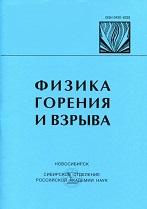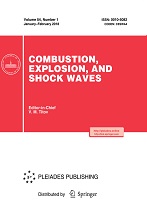|
This article is cited in 127 scientific papers (total in 127 papers)
Cast aluminized explosives (review)
P. P. Vadhe, R. B. Pawar, R. K. Sinha, S. N. Asthana, A. Subhananda Rao
High Energy Materials Research Laboratory, Pune, 411021, India
Abstract:
This paper reviews the current status and future trends of aluminized explosives. The major focus is on cast compositions, which encompass both the melt-cast trinitrotoluene (TNT) based and the slurry cast polymer-based compositions. Widely reported RDX and HMX based aluminized compositions with TNT used as a binder are discussed in detail. Various researchers have suggested a 15–20% Al content as an optimum from the viewpoint of velocity of detonation. A higher Al content, however, is incorporated in most of the compositions for a sustained blast effect, due to the potential of secondary reactions of Al with detonation products. The effect of the aluminum particle size on performance parameters (velocity of detonation, etc.) is included. There are some recent works on nanometric Al based compositions, and the results obtained by various researchers suggest mixed trends for RDX-TNT compositions. Studies on nitrotriazol and TNT based compositions bring out their low vulnerability. Some of the interesting findings on ammonium dinitramide and bis(2,2,2-trinitro-ethyl)nitramine (BTNEN) based compositions are also included. The review brings out superiority of polymer based aluminized explosives, as compared to conventional TNT based compositions, particularly, with respect to low vulnerability. In general, aluminized plastic bonded explosives find numerous underwater applications. Ammonium perchlorate (AP) is also incorporated, particularly, for enhancing underwater shock wave and bubble energy. Hydroxyl terminated polybutadiene appears to be the binder of choice. However, nitrocellulose, polyethylene glycol, and polycaprolactone polymer based compositions with energetic plasticizers, like bis-dinitropropyl acetal/formal (BDNPA/F, 1/1 mix), trimethylol ethane trinitrate, and triethylene glycol dinitrate are also investigated. Polyethylene glycol and polycaprolactone polymer based compositions are found to be low vulnerable, particularly, in terms of shock sensitivity. Highly insensitive polymer bonded nitrotriazol based compositions are being pursued all over the globe. The highly insensitive CL-20/AP combination meets the demands of high density and high velocity of detonation. Glycidyl azide polymer and poly nitratomethyl methyl oxetane appear to be binders of interest for plastic bonded explosives in view of their superior energetics. The vulnerability aspects of these compositions, however, need to be studied in detail. Brief information on plastic bonded and gelled thermobaric explosives is also included.
Keywords:
PBX, HTPB, CL-20, FOX-7, RDX, HMX, NTO, trinitrotoluene, cyclotetramethylene tetranitramine, cyclotrimethylene trinitramine, aluminum, particle size, velocity of detonation, insensitive munitions, munitions with attenuated risk.
Received: 03.10.2007
Accepted: 25.01.2008
Citation:
P. P. Vadhe, R. B. Pawar, R. K. Sinha, S. N. Asthana, A. Subhananda Rao, “Cast aluminized explosives (review)”, Fizika Goreniya i Vzryva, 44:4 (2008), 98–115; Combustion, Explosion and Shock Waves, 44:4 (2008), 461–477
Linking options:
https://www.mathnet.ru/eng/fgv1418 https://www.mathnet.ru/eng/fgv/v44/i4/p98
|


|





 Contact us:
Contact us: Terms of Use
Terms of Use
 Registration to the website
Registration to the website Logotypes
Logotypes








 Citation in format
Citation in format 
